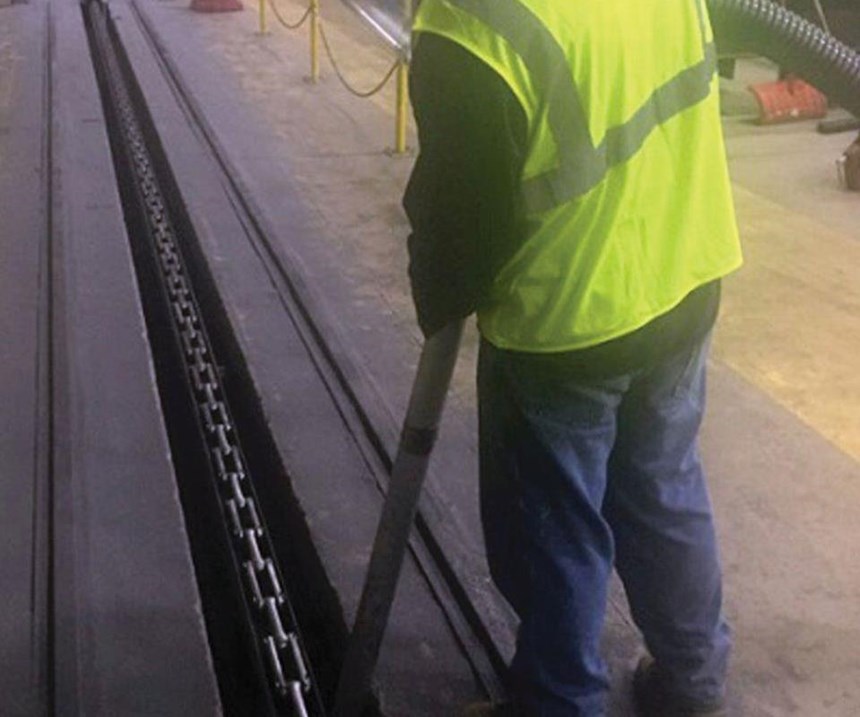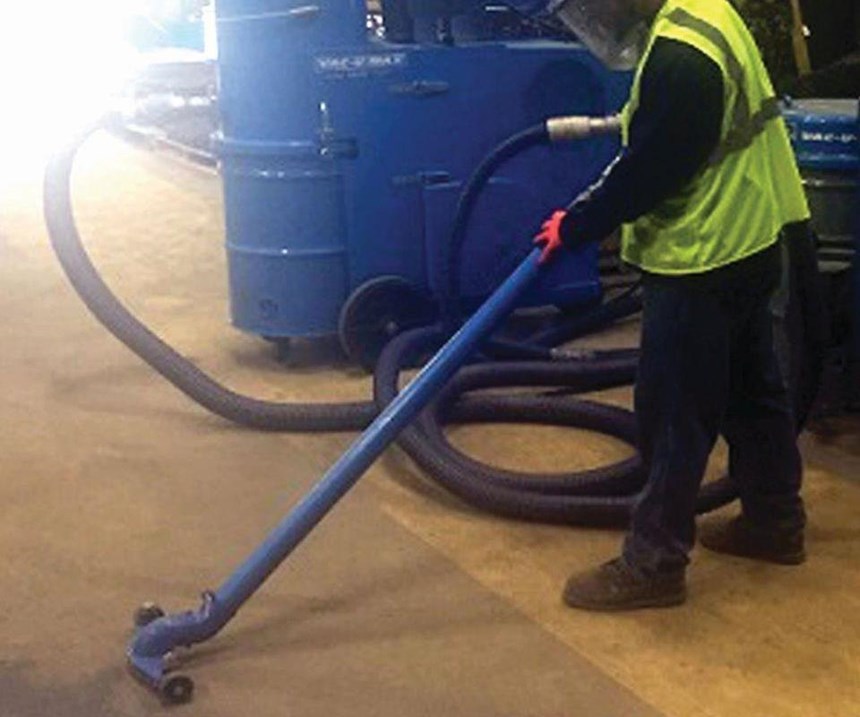Shop Vac Reduces Unscheduled Downtime, Safety Concerns
Cianbro needed to eliminate manual handling of heavy material. The 15-hp Vac-U-Max shop vac increased safety and reduced downtime and wasted labor.
When Cianbro wanted to eliminate a hazardous process in which workers manually removed steel shot from an auger system connected to a cabinet-style blast machine at its 40,000-square-foot fabrication and coating facility in Georgetown, Massachusetts, the company decided to purchase a heavy-duty vacuum from Vac-U-Max (Belleville, New Jersey). Beyond eliminating the ergonomic hazards and potential costs of injury, the company says the vacuum has provided increased uptime, reduced manpower, increased productivity, improved product quality, and a healthier, cleaner environment.
Cianbro operates in more than 40 states across a diverse range of markets, performing civil and structural projects from building bridges to operating fabrication and coating facilities, and working in power plants and paper mills. The Georgetown facility fabricates structural steel beams for bridge and building projects. Many of these projects begin with moving the beams via a conveyor system through a cabinet-style blast machine where steel beads called “shot” remove rust and mill scale in preparation for welding or painting. Once the steel shot hits the beam, it drops down into an auger system that reclaims and feeds the material back into the blast machine for reuse.
The sandblasting process is taxing on machinery, and when inherent breakdowns occur, workers must remove all blast media from the system to perform maintenance. Previously on those occasions, workers used to sweep and shovel the steel shot into drums and manually move them from the production floor using a dolly. Focused on safety, the company wanted to alleviate the ergonomic issues associated with manually shoveling heavy media in a tight space and moving heavy drums. Kris Chipman, safety, health and environmental supervisor, began researching solutions, including some big shop-type vacuums.
After speaking with a Vac-U-Max representative, it quickly became clear that commercial, shop-type vacuums were insufficient to handle the volume of heavy-blast media, Ms. Chipman says. Instead, the vacuum needed to be designed for high-volume recovery in an industrial setting. The solution for Cianbro was Vac-U-Max’s 15-hp 1020MFS continuous-duty vacuum.
Even though the unit is capable of recovering as much as 5 tons per hour and is designed to pick up heavy materials including steel shot, foundry sand, metal powders, sludges and other materials similar in nature, Ms. Chipman wanted final assurance that the vacuum could pick up Cianbro’s particular blast media.
“This is heavy stuff,” he says. “Each 55-gallon drum weighs approximately 2,000 pounds, and from the beginning, we were not sure if what we wanted to do was even possible. So we sent Vac-U-Max a sample of the shot media, they did some testing and guaranteed it would work for us.”
Although the 1020 unit is portable with 14-inch rubber tires and a dual swivel caster wheel that makes it easily maneuverable by a single operator, Cianbro mounted its unit to a skid. “Push-pull is a hazard in our book, and we do all that we can to avoid it,” Ms. Chipman says. “So, we mounted it to a skid and move it with equipment. It is very portable for us because we have fork trucks and loaders to move it around our facility.” As a result, Vac-U-Max now offers the model 1020 with an optional base designed for forklifts.
“The great thing about this vacuum system is that the hoses are long enough that we can leave the collection drums where they can be mechanically moved, instead moving drum dollies manually,” Ms. Chipman says.
Since acquiring the vacuum, the facility has cut the labor required to empty the blast machine by more than 50 percent. The task of emptying the pit, which used to take eight hours utilizing two workers, now takes one worker three hours.
“Now, we can shut it down in the morning, vacuum it out and have it repaired the same day using one person,” Ms. Chipman says. “The reduced labor on maintenance, which is something that cannot be billed, is now redistributed to work hours on a project that is billable.”
Operations Manager Shawn Ramsay says that, in addition to treducing the risk of injuries and enabling quick and safe clearing of the steel shot from the machine pit for maintenance, the vacuum also has proved to be helpful in the daily maintenance and cleanliness of the areas around the machine.
In an environment where the nature of a blasting machine is to, in effect, destroy itself over time, reducing the amount of wear and tear can increase the longevity of that equipment and reduce the number of breakdowns and unscheduled downtime. Because the vacuum makes light work of the heavy blast media, the facility now cleans around the blast cabinet and auger system a couple times a week, reducing abrasion to machine parts.
Before getting the vacuum, the machine used to break down about once each month, and all blast media would need to be removed for some type of unscheduled maintenance or repair.
After implementing the vacuum, Ms. Chipman says the company has only had to clean the entire pit twice in one year for unscheduled maintenance. This is an 80 percent reduction in unscheduled downtime, which has led to increased production time.
In addition to using the vacuum for its original task of cleaning steel shot from the blast machine and auger, Mr. Ramsay says the facility has expanded the use of the vacuum in other applications, such as cleaning garnet from the floor of another blasting area, and also in the paint bay. “It has allowed us to clean the areas in a much safer and expeditious manner,” he says.
The facility also uses the vacuum to clean up overspray in its coating operation as well as for general housekeeping on the shop floor. “When we do a good clean up, we utilize the vacuum. It is a lot faster and more efficient than just sweeping. And it gets it cleaner,” Ms. Chipman says.
Read Next
The Cut Scene: The Finer Details of Large-Format Machining
Small details and features can have an outsized impact on large parts, such as Barbco’s collapsible utility drill head.
Read More3 Mistakes That Cause CNC Programs to Fail
Despite enhancements to manufacturing technology, there are still issues today that can cause programs to fail. These failures can cause lost time, scrapped parts, damaged machines and even injured operators.
Read More

















.png;maxWidth=300;quality=90)






